Below is a selected list of publications, the full list with citations can be found at Google Scholar.
| Hancox, Z., Kingsbury, S.R., Clegg, A., Conaghan, P.G., Relton, S.D. (2024).
Developing the Temporal Graph Convolutional Neural Network Model to Predict Hip Replacement using Electronic Health Records.
In International Conference on Machine Learning and Applications (ICMLA 2024).
|
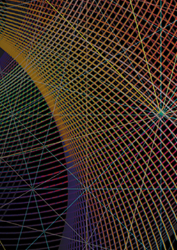
|
| Abstract: Background: Hip replacement procedures improve patient lives by relieving pain and restoring mobility. Predicting hip replacement in advance could reduce pain by enabling timely interventions, prioritising individuals for surgery or rehabilitation, and utilising physiotherapy to potentially delay the need for joint replacement. This study predicts hip replacement a year in advance to enhance quality of life and health service efficiency. Methods: Adapting previous work using Temporal Graph Convolutional Neural Network (TG-CNN) models, we construct temporal graphs from primary care medical event codes, sourced from ResearchOne EHRs of 40-75-year-old patients, to predict hip replacement risk. We match hip replacement cases to controls by age, sex, and Index of Multiple Deprivation. The model, trained on 9,187 cases and 9,187 controls, predicts hip replacement one year in advance. We validate the model on two unseen datasets, recalibrating for class imbalance. Additionally, we conduct an ablation study and compare against four baseline models. Results: Our best model predicts hip replacement risk one year in advance with an AUROC of 0.724 (95% CI: 0.715-0.733) and an AUPRC of 0.185 (95% CI: 0.160-0.209), achieving a calibration slope of 1.107 (95% CI: 1.074-1.139) after recalibration. Conclusions: The TG-CNN model effectively predicts hip replacement risk by identifying patterns in patient trajectories, potentially improving understanding and management of hip-related conditions.
|
| Hancox, Z., Relton, S.D., Clegg, A., Conaghan, P.G. (2023).
Hypergraphs for Frailty Analysis.
In International Conference on Process Mining (ICPM 2023), pp. 271–282.
|
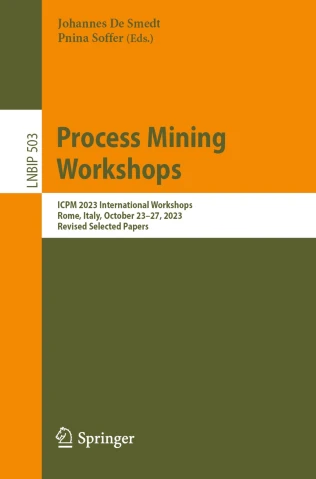
|
| Abstract: Frailty and multimorbidity becomes more prevalent as the population continues to age. We employ directed hypergraphs to represent the complex interactions among multiple health conditions and capture the inter-dependencies within multimorbidity sets. We introduce the inclusion of ‘Mortality’ nodes into directed hypergraphs. Through the analysis of ResearchOne data, we aim to identify the most prevalent combinations of frailty conditions alongside their co-occurrence with mortality, providing valuable knowledge for healthcare professionals to improve patient care and develop targeted interventions. We demonstrate that hypergraphs enable us to determine the probability of acquiring another electronic frailty index (eFI) condition, understand condition connectivity and sequentiality, and identify the most influential hyperarcs. The findings from this study suggest that hypergraphs enable us to retain progression information compared to holistic views, facilitating the implementation of more effective healthcare strategies.
|
| Hancox, Z. & Relton, S.D., 2022, September. Temporal Graph-Based CNNs (TG-CNNs) for Online Course Dropout Prediction. In Foundations of Intelligent Systems: 26th International Symposium, ISMIS 2022, Cosenza, Italy, October 3–5, 2022, Proceedings (pp. 357-367). Cham: Springer International Publishing. |
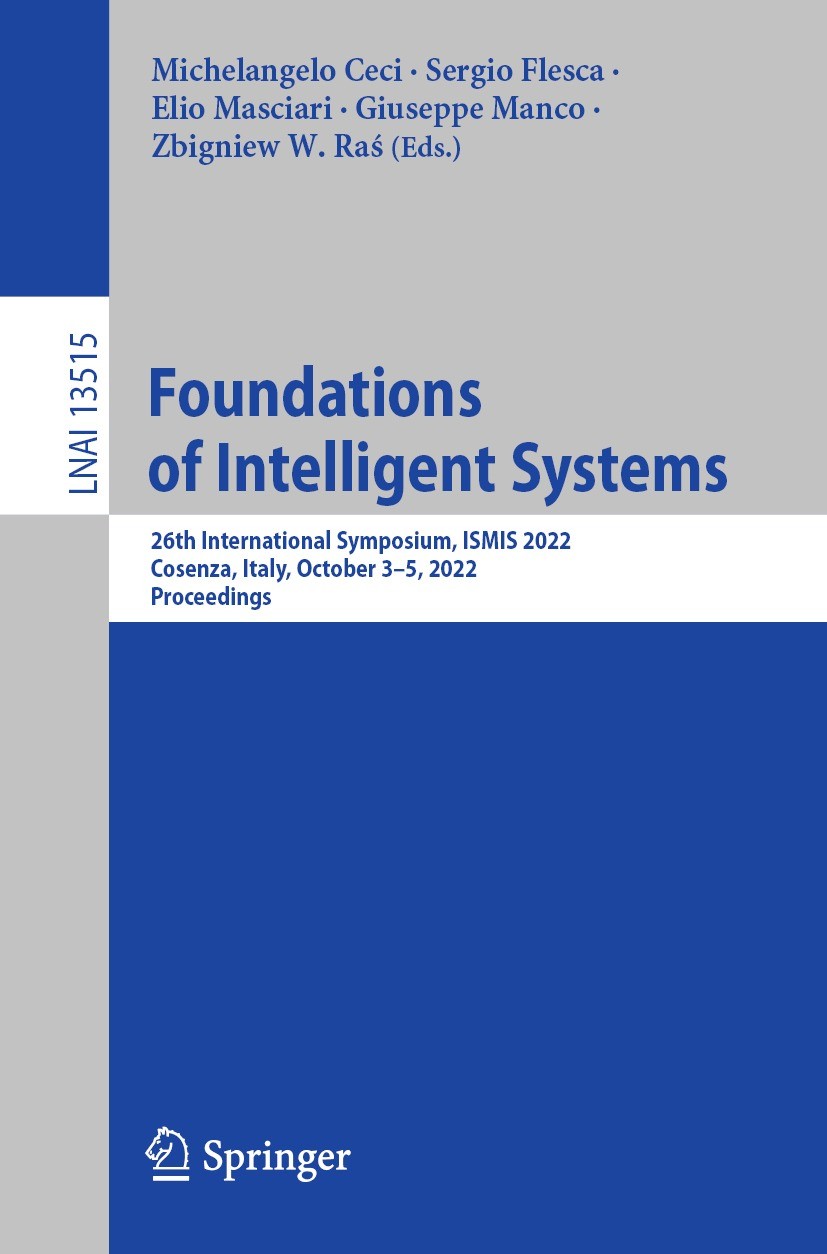 |
| Abstract: Due to the global pandemic, the use of online courses is increasing significantly; yet the rate of student dropout from online courses is rising. The Accessible Culture & Training Massive Open Online Course (ACT MOOC) dataset is comprised of a temporal sequence of student actions and subsequent dropout information. We introduce a novel approach based upon temporal graphs, which uses the sequence of (and time between) events to predict dropout. The dataset consists of 7,047 users, with a dropout rate of 57.7%. The Temporal Graph-Based Convolutional Neural Network (TG-CNN) models developed in this study are compared against baseline models and existing models in the literature. Performance is assessed using the AUC, accuracy, precision, recall, and F1 score. Our novel TG-CNN model achieves an AUC score of 0.797, which improves upon previous literature: JODIE 0.756, TGN + MeTA 0.794, TGN 0.777, and CoPE 0.762. Our model offers a novel and intuitive formulation of this problem, with state-of-the-art performance. |
| Hancox, Z., Kingsbury, S.R., Conaghan, P.G., Clegg, A. & Relton, S.D (2025). Primary care prediction of hip and knee replacement 1–5 years in advance using Temporal Graph-based Convolutional Neural Networks (TG-CNNs). In Rheumatology, Volume 64, 4589–4598. |
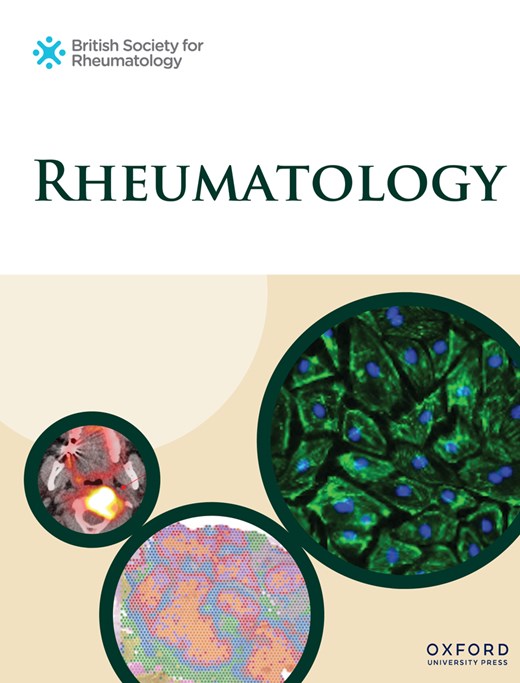 |
| Abstract:Objective: This study aimed to predict the risk of requiring a primary hip or knee replacement 1 and 5 years in advance, using clinical codes.
Methods: Primary care clinical codes, sourced from ResearchOne Electronic Health Records between 1999 and 2014, were used to represent patient pathways prior to hip or knee replacement. Patient records were used to train and test models for hip or knee replacement, 1 and 5 years in advance. Temporal graphs were constructed from clinical codes to predict hip and knee replacement risk, where nodes are clinical codes, and edges are the time between primary care visits. Hip and knee replacement cases were matched to controls by age, sex and Index of Multiple Deprivation. The model was validated on unseen data, with performance measured using area under the receiver operator curve (AUROC), calibration and area under the precision recall curve (AUPRC), recalibrating for class imbalance.
Results: For knee replacement prediction, AUROC was 0.915 (95% CI 0.914, 0.916) (1 year) and 0.955 (95% CI 0.954, 0.956) (5 years) with AUPRCs of 0.353 (95% CI 0.302, 0.403) and 0.442 (95% CI 0.382, 0.503), respectively. For hip replacement prediction, AUROC was 0.919 (95% CI 0.918, 0.920) (1 year) and 0.967 (95% CI 0.966, 0.968) (5 years), with AUPRCs of 0.409 (95% CI 0.366, 0.451) and 0.879 (95% CI 0.833, 0.924), respectively.
Conclusion: Hip and knee replacement risk can be predicted up to 5 years in advance, with a temporal-graph based artificial intelligence model achieving the best performance. This may be used for planning preventative treatment or triaging patients. |
|
Hancox, Z., Pang, A., Conaghan, P.G., Kingsbury, S.R., Clegg, A. & Relton, S.D. (2023).
A systematic review of networks for prognostic prediction of health outcomes and diagnostic prediction of health conditions within Electronic Health Records.
Artificial Intelligence in Medicine, 145, 104531.
|

|
|
Abstract: Background and objective: Using graph theory, Electronic Health Records (EHRs) can be represented graphically to exploit the relational dependencies of the multiple information formats to improve Machine Learning (ML) prediction models. In this systematic qualitative review, we explore the question: How are graphs used on EHRs, to predict diagnosis and health outcomes?
Methodology: The search strategy identified studies that used patient-level graph representations of EHRs to utilise ML to predict health outcomes and diagnoses. We conducted our search on MEDLINE, Web of Science and Scopus.
Results: 832 studies were identified by the search strategy, of which 27 studies were selected for data extraction. Following data extraction, 18 studies used ML with patient-level graph-based representations of EHRs to predict health outcomes and diagnoses. Models ranged from traditional ML to neural network-based models. MIMIC-III was the most used dataset (n = 6, where n is the number of occurrences), followed by National Health Insurance Research Database (NHIRD) (n = 4) and eICU Collaborative Research Database (eICU) (n = 4). The most predicted health outcomes were mortality (n = 9; 21%), hospital readmission (n = 9; 21%), and treatment success (n = 4; 9%). Model performances ranged across outcomes, mortality prediction (Area Under the Receiver Operating Characteristic (AUROC): 72.1 - 91.6; Area Under Precision-Recall Curve (AUPRC): 34.8 - 81.3) and readmission prediction (AUROC: 63.7 - 85.8; AUPRC 39.86 - 84.7). Only one paper had a low Risk of Bias (RoB) that applied to our research question (4%).
Conclusion: Graph-based representations using EHRs, for individual health outcomes and diagnoses requires further research before we can see the results applied clinically. The use of graph representations appears to improve EHR representation and predictive performance compared to baseline ML methods in multiple fields of medicine.
|
| Hancox, Z., Hussain, H.S.D. & Sefat, F. (2023). Encapsulation for breast cancer treatment. In Principles of Biomaterials Encapsulation: Volume Two, 661-720. |
 |
| Abstract: Chemotherapy is most traditionally used to treat breast cancer, however the systemic toxicity and side effects associated with it render chemotherapy treatment nonideal. This chapter describes the requirements for encapsulation systems to treat breast cancer. Furthermore, some recent breast cancer treatments that use encapsulation to improve treatment outcomes are compared. There are many cases of successful enhancement of therapeutic drug delivery using encapsulation systems. Encapsulation devices can reduce the systemic toxicity on healthy cells while inducing apoptosis or cell proliferation on breast cancer cells. Using encapsulation methods for breast cancer treatment provide more discrete and less invasive methods to treat cancer, while improving patient reported outcomes. This chapter aims to provide the reader with an insight into the current biomaterials and drugs used in nanomedicine to improve the treatment of breast cancer. |
| Hancox, Z., Nisar, A. & Sefat, F., (2023). Encapsulation of natural materials In Principles of Biomaterials Encapsulation: Volume Two, 39-92. |
 |
| Abstract: By using natural biomaterials, scientists have been able to design and create a range of encapsulation devices with various mechanical and bio-functionalities to hold specific molecules for a multitude of applications. These natural biomaterial encapsulation tools can provide protection from the host’s immune system and from harsh environments. Encapsulation vehicles can enable control of the encapsulated molecules or cells, to allow them to reach the required target location or even direct cell differentiation lineage in stem cell applications. When encapsulating cells, encapsulation can aid cell expansion and maintain cell viability. Cell-matrix interaction, biodegradation, and biocompatibility can be enhanced to improve treatment using targeted drug delivery. Natural materials are attractive for many medical and tissue engineering applications, such as transplantation, drug delivery, cell delivery, and regenerative medicine. There are various natural materials used as encapsulation vehicles, the properties of these materials, including mechanical properties, sources, permeability, and modification techniques, are vital to tune depending on the encapsulation application. In this chapter some of the current natural biomaterials used for creating encapsulation vehicles and their advantages and challenges will be discussed. |
| Banami, M.A., Rahmatullah, M., Farhan, N., Hancox, Z., Yousaf, S., Arabpour,Z., Moghaddam, Z., Mozafari, M. & Sefat, F. (2021) Adipose tissue-derived mesenchymal stem cells for breast tissue regeneration. In Future Medicine. 47-70 |
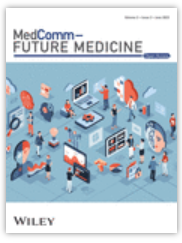 |
| Abstract: With an escalating incidence of breast cancer cases all over the world and the deleterious psychological impact that mastectomy has on patients along with several limitations of the currently applied modalities, it's plausible to seek unconventional approaches to encounter such a burgeoning issue. Breast tissue engineering may allow that chance via providing more personalized solutions which are able to regenerate, mimicking natural tissues also facing the witnessed limitations. This review is dedicated to explore the utilization of adipose tissue-derived mesenchymal stem cells for breast tissue regeneration among postmastectomy cases focusing on biomaterials and cellular aspects in terms of harvesting, isolation, differentiation and new tissue formation as well as scaffolds types, properties, material-host interaction and an in vitro breast tissue modeling. |
| Shang, Z., Zhao, Z., Fang, H., Relton, S., Murphy, D., Hancox, Z., Yan, R. & Wong, D., 2021, September Deep Discriminative Domain Generalization with Adversarial Feature Learning for Classifying ECG Signals. In 2021 Computing in Cardiology (CinC) (Vol. 48, pp. 1-4). IEEE. |
 |
| Abstract: Introduction: The goal of the 2021 PhysioNet/CinC challenge is to classify cardiac abnormalities from ECGs and evaluate the diagnostic potential of reduced-lead ECGs. Here, we describe the classification model created by the team “AI_Healthcare”. Methods: ECGs were downsampled to 300 Hz and filtered by wavelet. ECGs were randomly clipped or zero-padded to 4,096 samples. We modified an SE-ResNet to perform multi-task classification of both dataset and disease. We used a gradient reversal layer as part of an adversarial feature learning scheme to learn domain-invariant and discriminative representations. Results: We trained our domain-invariant model on 5 datasets, keeping one data set (Ningbo) for local validation. We also trained a baseline SE-ResNet using the same training data. In validation on the held-out data set, the domain-invariant model had a higher Challenge metric than the baseline model. Our entry was not officially ranked in the Challenge, as we did not have a successful entry during the unofficial phase of the Challenge. Conclusion: The domain-invariant model performed better than the baseline model in local held-out datasets, suggesting that this method may help improve generalisation performance. |
| Hancox, Z., Heidari Keshel, S., Yousaf, S., Saeinasab, M., Shahbazi, M.A. & Sefat, F. (2020). The Progress in Corneal Translational Medicine, Biomaterials Science, 2020, DOI: 10.1039/D0BM01209B. |
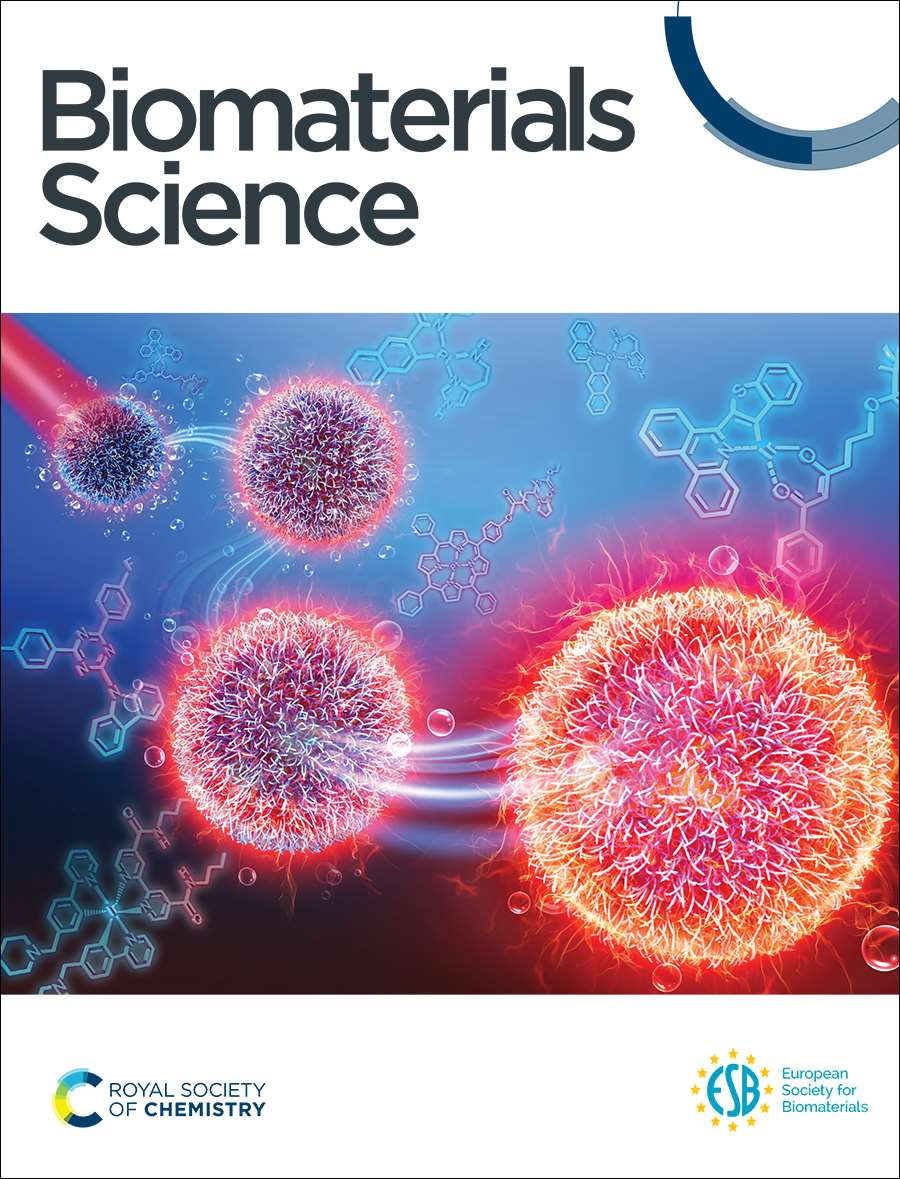 |
| Abstract: Cornea tissue is in high demand by tissue donation centres globally, and thus tissue engineering cornea, which is the main topic of corneal translational medicine, can serve as a limitless alternative to a donated human cornea tissue. Tissue engineering aims to produce solutions to the challenges associated with conventional cornea tissue, including transplantation and use of human amniotic membrane (HAM), which have issues with storage and immune rejection in patients. Accordingly, by carefully selecting biomaterials and fabrication methods to produce these therapeutic tissues, the demand for cornea tissue can be met, with an improved healing outcome for recipients with less associated harmful risks. In this review paper, we aim to present the recent advancements in the research and clinical applications of cornea tissue, applications including biomaterial selection, fabrication methods, scaffold structure, cellular response to these scaffolds, and future advancements of these techniques. |
| Hancox, Z., Yousaf, S., Farzi, G., Momeni-Moghadam, M., Shakeri, S., Khaghani, S., Youseffi, M., Mozafari, M. & Sefat, F. (2019) Scaffolds for tracheal tissue engineering. Handbook of Tissue Engineering Scaffolds: Volume Two, 361-391 |
 |
| Abstract: This chapter aims to expand the reader's knowledge on the human trachea, problems that commonly arise within the windpipe, and correctional methods for these issues, including tissue-engineered solutions. Cell derivation is covered to give examples of what could potentially work successfully and the advantages and disadvantages of specific derivations. A variety of experimental scaffold construction techniques will be discussed in detail, allowing the reader to obtain an understanding of the intricate methods required to make tissue-engineered tracheal tissue. This chapter demonstrates the extensive parameters required to make successful tissue with the ability to withstand the stresses of native tissue, while creating an environment for cells to grow and thrive on. |
| Hancox, Z., Yousaf, S., Shah, T., Fhong, S., Zhang, W., Ahmed, N., Mozafari, M., Nair, K., Coates, P. & Sefat, F. (2019) Scaffolds for reconstruction of the diaphragm. Handbook of Tissue Engineering Scaffolds: Volume Two, 449-474. |
 |
| Abstract: The diaphragm is a crucial mammalian skeletal muscle, essential for respiration and to sustain human life. Besides respiration, the complex organ offers a physical barrier between the thoracic and abdominal cavities. Unfortunately, the surgical approach for a compromised diaphragm is generally associated with significant risks of defect recurrence, infection, and inadequate growth potential and can cause reformed damaged tissue structures. Consequently, the need for diaphragm resection necessitates the field of tissue engineering to reestablish physiological function and maintenance [1]. Recent therapies employ implantable biodegradable three-dimensional scaffolds to overcome congenital or acquired disorders of the diaphragm. This interdisciplinary field requires a thorough understanding of structural integrity and the diaphragmatic anatomy using pioneered scaffolds to replicate the native architecture, enhancing mechanical properties. The principles of material science are combined with cell transplantation and appropriate tissue perfusion to produce the ideal biomaterial scaffolds, ensuring durability, biodegradability, nonimmunogenic responses, the reduction of morbidity, and reparation to poor muscle contraction [2,3]. |
| Hancox, Z., Yousaf, S., Khurshid, Z., Zafar, M., Youseffi, M., Mozafari, M., Tuinea-Bobe, C. & Sefat, F. (2019) Scaffolds for dental cementum. Handbook of Tissue Engineering Scaffolds: Volume One, 563-594. |
 |
| Abstract: Throughout this chapter, the reader will gain an insight into the structure of the cementum, formation of the cementum, common issues associated with the cementum, and how these problems could be corrected with the use of tissue-engineered scaffold techniques. Sections on cell and biomaterial selection are included, enabling detailed breakdown of the best combination of materials. Scaffold synthesis methods are covered, with details on how previous experiments have been altered to promote higher cementum formation and how to sufficiently meet the necessary mechanical properties, to withstand the forces within the mouth. On completion of this chapter, the importance of finding alternative methods to repair cementum problems will be covered, along with sufficient information on scaffolding techniques. |












